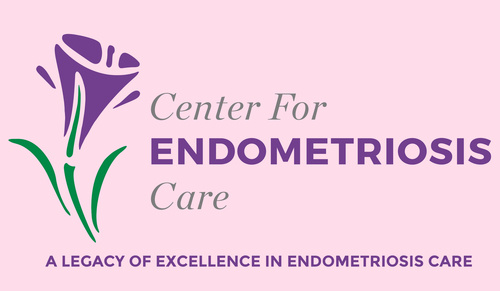How are Hysterectomies Performed? How Does it affect Recovery?
© Ken Sinervo MD, MSc, FRCSC. All rights reserved. No reproduction permitted without written permission. Revised since original publication and current as of 2023. No external funding was utilized in the creation of this material. The Center for Endometriosis Care neither endorses nor has affiliation with any resources cited herein. The following material is for informational purposes only and does not constitute medical advice.
In my previous article, I discussed indications for hysterectomy. In this article, I would like to discuss the route of hysterectomy. There are three main routes or “ways” to perform a hysterectomy. The majority of hysterectomies in the United States (over 60‐70%) are performed through a laparotomy or large incision which may be 5‐8 inches (or longer) in length. This can result in a much longer hospital stay, more pain following the procedure and a much longer recovery (often 6‐8 weeks). This approach is associated with increased risk of blood loss and possibly blood transfusion. This is called a total abdominal hysterectomy (when the cervix is also removed) and a subtotal abdominal hysterectomy (when the cervix is preserved).
A hysterectomy can also be performed vaginally. It is easier to perform in patients who have had children. It is more difficult to perform in those with a large, fibroid uterus, endometriosis or many previous surgical procedures including cesarean section. The recovery is generally shorter and less painful than abdominal hysterectomies, however, it can still be 4‐6 weeks before patients are able to return to normal activities.
Finally, there is the laparoscopic approach. Initially, the first hysterectomies done laparoscopically were laparoscopically‐assisted vaginal hysterectomies (LAVH) or laparoscopically‐assisted total vaginal hysterectomy (LTVH), since the cervix is also removed. The laparoscopic portion of the procedure allowed the gynecologist to make it possible to complete the hysterectomy vaginally when there were conditions that made it more difficult before. These included patients with scarring and/or endometriosis, or patients with multiple previous surgeries, or even larger fibroid uteri.
Now, hysterectomies can be completely performed laparoscopically. While the LAVH or LTVH has been around since the late 1980’s, other forms of laparoscopic hysterectomy were introduced shortly thereafter. The laparoscopic supracervical or subtotal hysterectomy (LSH) was introduced in the early 1990’s and preserved the cervix. Shortly after that, the laparoscopic total hysterectomy (TLH) was also described. The advantage of these procedures is that they were completely performed laparoscopically (no need to perform a significant part of the procedure which required more instruments and limited access) and that the recovery is much shorter and less painful, with most patients going home either the same day or the next morning and most resuming their normal activities within 2 weeks.
At the CEC, the most common form of hysterectomy performed is the LSH. We feel that it has many advantages including shorter operating time, less pain after surgery since there is no vaginal incision, better pelvic support since the major supports insert into the cervix and they are not disrupted during a LSH, no risk of vaginal shortening which occurs to some extent with all other forms of hysterectomy, possibly better sexual function compared to other forms of hysterectomy and less complications (both short and long‐term). If not performed properly, there can be greater risk of cyclical bleeding or spotting afterwards (as high as 10‐20% in some studies). In our experience, this can be kept below 1% with careful treatment of the cervical canal during the surgery. There are certain situations in which a TLH is indicated, such as pre‐ cancerous changes of the cervix or cervical dysplasia, or uterine hyperplasia or malignancy and a shortened anterior vaginal wall where prolapse of the remaining cervix is more likely, but this makes up less than 10% of our patients.
Unfortunately, many doctors cannot suture laparoscopically or have the training to perform these advanced laparoscopic procedures. While over 80‐90% can be performed laparoscopically, over 70% are still performed abdominally in the United States. Factors that affect how a doctor will approach hysterectomy include training, laparoscopic skill, and access to instrumentation. and an efficient surgical team. While there are no guarantees that a hysterectomy can always be performed laparoscopically, in our experience, the risk of an abdominal route is less than 1 in 500 hysterectomies and we have not performed a non‐ laparoscopic hysterectomy in over 10 years. This includes patients with severe endometriosis, large fibroids, severe adhesive disease, and multiple previous surgeries including C‐section.
So, while most endometriosis patients do not require a hysterectomy, other conditions may exist in which a hysterectomy may be recommended. The most important aspect of any hysterectomy which is performed in a patient with endometriosis, is that all the endometriosis be excised at the same time with the goal of preventing additional surgery. If other forms of treatment of endometriosis are used, there can be as high as a 60% recurrence of pain when the ovaries are preserved and even 10% recurrence of pain when the ovaries are removed. When re‐operated on, persistent endometriosis will be the most common finding. This has led many gynecologists to recommend removal of the ovaries which, leads to menopausal symptoms and possibly increased risk of mortality from other causes. Unfortunately, these recommendations are based on a treatment (hysterectomy), which does not treat the underlying disease (endometriosis). If the endometriosis is properly treated with complete and aggressive excision (removing all the endometriosis including areas of endo off ureter, bladder and/or bowel), the ovaries can be preserved in most patients with less than 10% requiring another surgery due to recurrent symptoms (which is the same risk as when endometriosis is not treated with excision and when the ovaries are removed). In conclusion, the most important thing to remember is to properly excise all endometriosis at the time of any laparoscopic procedure and definitely when a hysterectomy is required.
Back to Education


